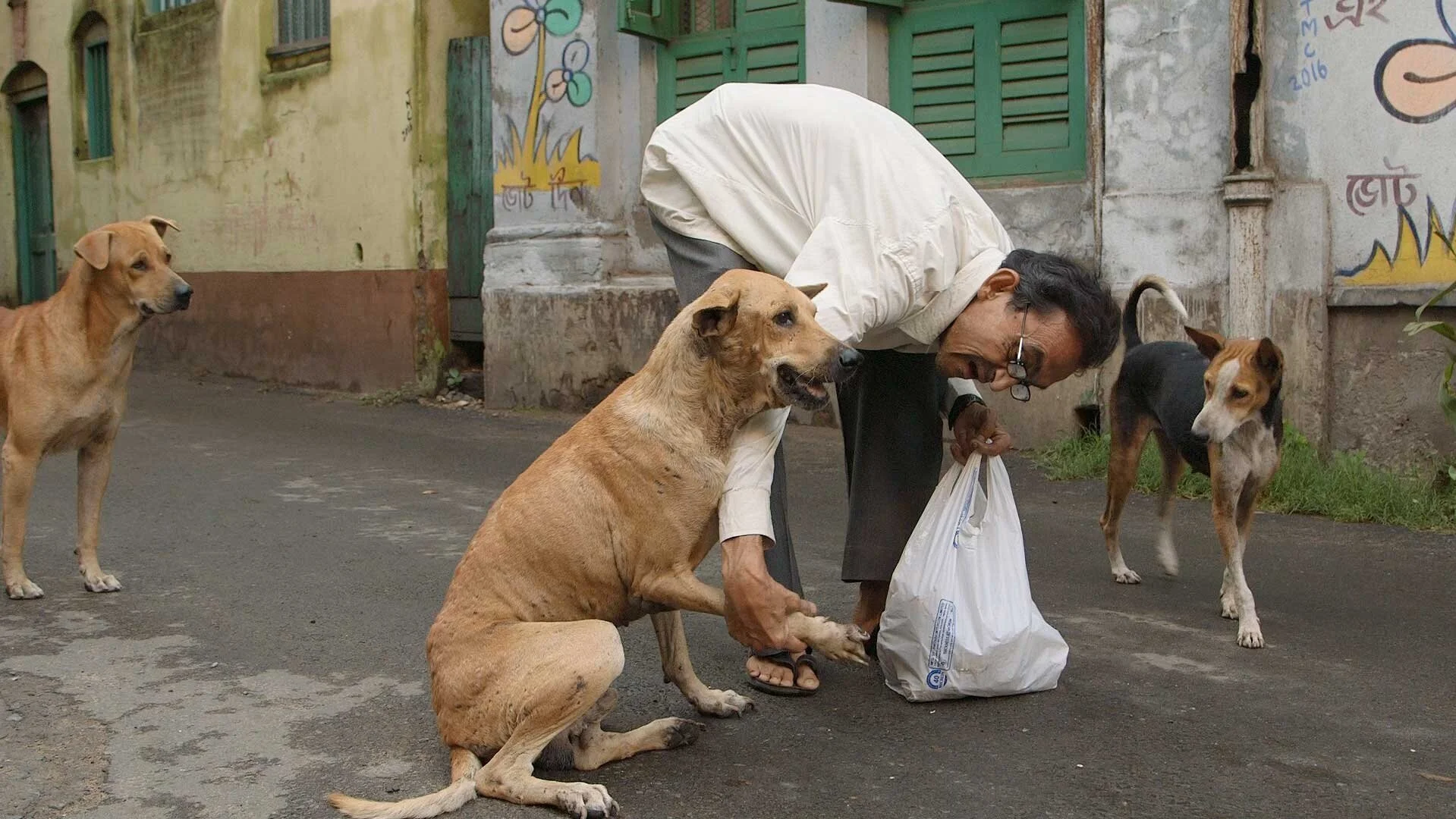Pariah Dog
The former Calcutta is the colourful setting for a very appealing work.
Multi-tasking on this, his first feature, Jesse Alk is the director, the producer, the co-writer, the editor and - perhaps most significantly of all - the photographer. Both for the sense of atmosphere that it creates and for its sheer quality the photography is crucial to Pariah Dog and that's not only for the way in which it enriches the film but for helping to make it such a distinct entity. This last point is not without importance since it helps to distinguish this offering from Elizabeth Lo's Stray. That film released a few weeks ago has a remarkable amount in common with this one despite Stray being shot in Istanbul while Pariah Dog is set in Kolkata. Both films are documentaries about dogs roaming a city's streets, both eschew any commentary, both are works photographed by their directors, both were shot over two or three years and both are wise enough to recognise that the subject matter benefits from being treated succinctly. Stray lasted 72 minutes and Pariah Dog is only five minutes longer.
In point of fact both films contain much that impresses and Stray was very warmly received. However, I did detect in it occasional touches of pretentiousness absent from Pariah Dog and, if Alk's film is somewhat episodic and lacking in shape, that was also true of Lo's work, only more so. Her film did have the appeal of literally getting up close to Istanbul's street dogs to the extent that it almost made one see the world from their viewpoint, but Pariah Dog is no less an observational work and, even if the close-ups are less frequent here, Kolkata's South Asian pye dogs are wonderfully engaging on camera.
However, what really leads me to prefer Pariah Dog is the film's intense human impact. As with Stray, which featured refugees alongside its dogs, Alk sets out to make a study which, despite the centrality of the dogs, is also about people and in this respect his film goes deeper. In Pariah Dog we spend much time with four people and in the process develop a strong rapport with them. All four love dogs and care for them, all four are loners. The oldest, Subrata, is 62 and drives a rickshaw. He finds at least passing popularity quite unexpectedly when his yodelling leads to his appearance in an episode of a popular television programme. Pinku, in contrast, is much younger and is an artist, but the sculptures that he makes out of wood rarely sell and he has to earn in the evenings by driving a toto buggy for hire. The other two are connected in that Kajal, a woman without plans to marry, helps out the older Milly who, having been deserted by her husband, is devoting her life to looking after animals.
Alk's film moves back and forth between these four, sometimes arbitrarily, and towards the end he briefly deserts the urban setting but without anything very special emerging. Similarly, a conflict that arises between Kajal and Milly is touched on rather than being handled in depth. But, if the treatment is less than perfect, Pariah Dog communicates vividly. It's a film that captures beautifully the bond of love shared between the people featured and the dogs in their care but, over and above that, its deep humanity ensures that its appeal will not be limited to devoted dog lovers even if they will be the first to acclaim it.
MANSEL STIMPSON
Featuring Kajal Halder, Malika 'Milly' Sarkar, Subrata Das, Pinaki 'Pinku' Dasgupta.
Dir Jesse Alk, Pro Jesse Alk, Screenplay Jesse Alk and Koustav Sinha, Ph Jesse Alk, Ed Jesse Alk.
Pagol Productions-True Story.
77 mins. Canada/USA/Italy. 2019. Rel: 30 April 2021. Available on True Story. No Cert.


